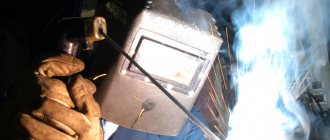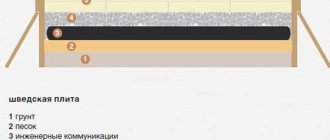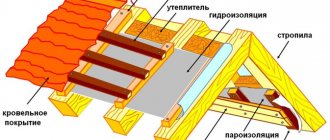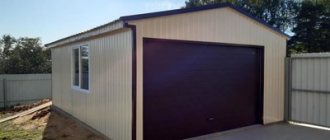What the article is about:
Why does a semi-automatic cook poorly and what can be done?
Often, when welding with a semi-automatic welding machine, the seam turns out to be bad, and the wire every now and then sticks to the metal. If there are no current clamps to check the amperage, then you can try changing the welding gas or using a wire of a smaller diameter.
Very often it is Chinese semi-automatic machines that suffer from this problem. These machines just don’t want to produce the welding current declared by the manufacturer, and then you have to work around the instructions.
What gas is needed for semi-automatic welding
Semi-automatic or mechanized welding is most often performed with solid wire, and the welding arc and molten metal are protected by gas. Gas is supplied to the welding zone through the torch nozzle.
You can read more about the process of semi-automatic welding in our article - How to work with a semi-automatic welding machine - Mig and Mag for beginners.
Most often, CO2 (carbon dioxide or as I call it carbon dioxide) is used for welding black steel. Less commonly used gas mixtures include CO2, Argon, Helium, sometimes Nitrogen and oxygen.
The use of gas determines the name of mig welding - welding using the inert gas argon or helium. MAG (MAG) - using active gas - carbon dioxide. Let's take a closer look at each of the gases.
Argon
As we have already said, semi-automatic (mechanized argon welding) is called magic. This shielding gas is used for semi-automatic welding most often for critical structures made of steel or aluminum. For welding, first-grade argon is used, which contains slightly more impurities than top-grade argon, namely up to 0.005-0.009% nitrogen and up to 0.001-0.002% oxygen.
Argon gas protects the weld pool, arc and heat-affected zone (heated area) very well. It does not dissolve in the weld metal and does not saturate the heated area in the heat-affected zone. The gas is 1.4-1.5 times heavier than air and has no smell or taste. Ar is not flammable and non-toxic, although some young welders are afraid to use argon, saying that it is harmful to health. This is not true, the gas itself is neither harmful nor beneficial.
High-grade argon is used for welding non-ferrous metals and alloys such as aluminum alloys, titanium alloys, chromium-nickel alloys, etc. The content of nitrogen and oxygen impurities in it is minimal for N - in the region of 0.0055 - 0.006%, for O2 - up to 0.0006-0.0007%. Higher grade gas is more expensive and should be used only in cases where it is justified.
Helium
This gas in its pure form is used quite rarely for semi-automatic machines, because the cost of He is unreasonably high. Also, helium is lighter than air and because of this its consumption is much greater than the same argon. Helium, like argon, has no color or smell and also comes in two varieties, only they are called differently.
The first is high purity with a helium content of up to 99.984-99.985%, the second is technical helium with a purity of around 99.7-99.8%. When using helium, the depth of metal penetration increases, since due to the high degree of ionization, the arc burns with the release of more energy (1.4-2 times more efficient compared to welding in argon).
Helium is used when welding active (such as magnesium, for example) or chemically pure metals (for example, alloys based on aluminum and copper). The use of helium is very common in the USA and Germany, but is rarely used in the CIS countries. More often it comes in mixtures with argon or carbon dioxide.
Carbon dioxide CO2
This gas is a favorite for semi-automatic welding of “ferrous” (low-carbon, low-alloy, etc.) steels. This is due to the fact that CO2 is cheap and can be found even in remote settlements.
Carbon dioxide has a weak, barely perceptible odor (of course, if it is a well-purified gas, without condensation). The gas has no color or taste; it is a strong oxidizing agent. CO2 is highly soluble in water (it is also used in the food industry to carbonate drinks). Sometimes welders in production use a hose and a plastic bottle to make soda.
The gas is heavier than air, which is good for welding since the gas consumption will not be high compared to helium. The only thing is to ensure good ventilation of the room during long-term welding, since gas can accumulate especially in lowlands (various pits, etc.). Ideally, of course, there would be an exhaust hood, but such systems are usually only used in large industries. Carbon dioxide (CO2) already comes in three grades: first, second and highest.
The most impurities are in the second grade, up to 1.2%. The first grade contains impurities no more than 0.4-0.5%, and the highest - up to 0.1-0.2% and is used for critical steel structures.
Carbon dioxide (carbon dioxide) absorbs moisture, which will negatively affect welding. We recommend placing the cylinder with the valve down an hour and a half before welding. Before welding, without turning the cylinder over, open the valve and release a little gas with moisture. You can also use special equipment for drying gas - a dehumidifier.
Various steels with low and medium carbon content are welded in carbon dioxide; it can be used in welding corrosion-resistant steels and cast irons.
Nitrogen
Nitrogen is used very limitedly for semi-automatic welding machines; this gas is usually used when welding copper. Because it is in relation to copper that nitrogen is an inert gas. For most other metals, nitrogen is an active gas that dissolves in the molten metal, thereby forming numerous defects in the form of gas pores. There are 4 grades available: the highest, in which the impurity does not exceed 0.1%. Nitrogen of the 1st grade can contain impurities up to 0.5%, while the 2nd grade brings 0.9-1%. As for 3-grade nitrogen, it can contain up to 3% of various impurities. Nitrogen has no color, no smell, no taste and is not poisonous. For welding, it is usually supplied in cylinders with a volume of 40 liters. These cylinders are black in color, like the carbon dioxide cylinder, with the inscription “Nitrogen” in yellow.
Oxygen
Oxygen is a very active gas. It does not burn itself, but very actively supports combustion. For welding, oxygen in its pure form is not applicable. As a rule, oxygen is used only in a mixture with inert gases. Oxygen has no smell, no taste, no color. They produce 3 grades of oxygen: 1st grade with a pure oxygen content of 99.7-99.8%; 2nd grade - 99.4% - 99.5% and 3rd grade with an impurity content of up to 0.8%. We will consider the use of oxygen in more detail in the section on gas mixtures.
Useful article - Do you know how much an oxygen cylinder weighs and what its volume is?
Welding mixture for semi-automatic machine
For semi-automatic welding, the following mixtures of gases are most often used: a mixture of argon and helium, a mixture of argon and carbon dioxide, a mixture of argon and oxygen, as well as a mixture of argon carbon dioxide and oxygen in various percentages.
A mixture of argon and oxygen
When the oxygen content is from 1% to 4% in the mixture, the welding process becomes very stable, and the fluidity of the metal molten in the weld pool increases. The metal transfer becomes fine-droplet, there is very little splashing, and the seam turns out smooth and beautiful. With small droplet transfer of metal, the consumption of welding wire, which is heavily wasted on spatter, is significantly reduced.
A mixture of argon and helium
This mixture is used for welding active, non-ferrous metals and alloys such as aluminum, titanium and others. This mixture provides a very high level of protection for the molten metal in the weld pool. The optimal composition for this mixture is 50% + 50%. You can also find a ratio of 60-65% helium and 35-40% argon.
A mixture of carbon dioxide and oxygen
Such mixtures are not very often used in practice. The optimal composition for them is 65-75% carbon dioxide and 25-35% oxygen. When using such mixtures, the seam is formed somewhat better than when using pure carbon dioxide. As a rule, a similar mixture is used for welding black steel (carbon structural steel, as well as some alloy steel).
A mixture of argon and carbon dioxide
This mixture is most often used for welding carbon, low- and medium-alloy steels of the austenitic class (stainless steel). The ratio of this mixture is 74-80% argon and 20-26% CO2. When using this mixture, very good protection of the welding arc and metal is provided.
There is also very little metal spattering. The welding seam is finely flaky, and the seam formation process is stable. This mixture very well increases welding productivity, since the presence of argon increases the power of other welding welds. Thanks to this property, the process goes faster.
Useful article - How to choose the right welding cable for an inverter machine and not lose money.
Gas distribution nozzles
The nozzles are designed to distribute the gas flow evenly and to protect the welding tip from damage. Nozzle diameters from 9.5 mm to 19 mm are available.
Article: 071.500.190 Nozzle d19mm (MIG MP 26/400/500) SVO2619
A gas distribution nozzle with a diameter of 19 mm is installed on a MIG welding torch and serves to uniformly distribute the gas flow, as well as to protect the welding tip from mechanical impact or accidental contact with the product being welded. Suitable for MP 36/400/500 series burners.
Price: 299 RUR
Article: 071.500.160 Nozzle d16mm (MIG MP 26/400/500) SVO2616
A gas distribution nozzle with a diameter of 16 mm is installed on a MIG welding torch and serves to uniformly distribute the gas flow, as well as to protect the welding tip from mechanical impact or accidental contact with the product being welded. Suitable for MP 26/400/500 series burners.
Price: 299 RUR
Article: 071.500.140 Nozzle d14mm (MIG MP 26/400/500) SVO2614
A gas distribution nozzle with a diameter of 14 mm is installed on a MIG welding torch and serves to uniformly distribute the gas flow, as well as to protect the welding tip from mechanical impact or accidental contact with the product being welded. Suitable for MP 26/400/500 series burners.
Price: 299 RUR
Article: 071.360.190 Nozzle d19mm (MIG MP 36) SVO3619
A gas distribution nozzle with a diameter of 19 mm is installed on a MIG welding torch and serves to uniformly distribute the gas flow, as well as to protect the welding tip from mechanical impact or accidental contact with the product being welded. Suitable for MP 36 series burners.
Price: 395 RUR
Article: 071.360.160 Nozzle d16mm (MIG MP 36) SVO3616
A gas distribution nozzle with a diameter of 16 mm is installed on a MIG welding torch and serves to uniformly distribute the gas flow, as well as to protect the welding tip from mechanical impact or accidental contact with the product being welded. Suitable for MP 36 series burners.
Price: 395 RUR
Article: 071.360.120 Nozzle d12mm (MIG MP 36) SVO3612
A gas distribution nozzle with a diameter of 12 mm is installed on a MIG welding torch and serves to uniformly distribute the gas flow, as well as to protect the welding tip from mechanical impact or accidental contact with the product being welded. Suitable for MP 36 series burners.
Price: 395 RUR
Article: 071.250.180 Nozzle d18mm (MIG MP 25) SVO2518
A gas distribution nozzle with a diameter of 18 mm is installed on a MIG welding torch and serves to uniformly distribute the gas flow, as well as to protect the welding tip from mechanical impact or accidental contact with the product being welded. Suitable for MP 25 series burners.
Price: 160 RUR
Article: 071.250.150 Nozzle d15mm (MIG MP 25) SVO2515
A gas distribution nozzle with a diameter of 15 mm is installed on a MIG welding torch and serves to uniformly distribute the gas flow, as well as to protect the welding tip from mechanical impact or accidental contact with the product being welded. Suitable for MP 25 series burners.
Price: 160 RUR
Article: 071.250.110 Nozzle d11mm (MIG MP 25) SVO2511
A gas distribution nozzle with a diameter of 11 mm is installed on a MIG welding torch and serves to uniformly distribute the gas flow, as well as to protect the welding tip from mechanical impact or accidental contact with the product being welded. Suitable for MP 25 series burners.
Price: 160 RUR
Article: 071.240.170 Nozzle d17mm (MIG MP 24/240) SVO2417
A gas distribution nozzle with a diameter of 17 mm is installed on a MIG welding torch and serves to uniformly distribute the gas flow, as well as to protect the welding tip from mechanical impact or accidental contact with the product being welded. Suitable for MP 24/240 series burners.
Price: 170 RUR
Article: 071.240.125 Nozzle d12mm (MIG MP 24/240) SVO2412
A gas distribution nozzle with a diameter of 12 mm is installed on a MIG welding torch and serves to uniformly distribute the gas flow, as well as to protect the welding tip from mechanical impact or accidental contact with the product being welded. Suitable for MP 24/240 series burners.
Price: 170 RUR
Article: 071.240.100 Nozzle d10mm (MIG MP 24/240) SVO2410
A gas distribution nozzle with a diameter of 10 mm is installed on a MIG welding torch and serves to uniformly distribute the gas flow, as well as to protect the welding tip from mechanical impact or accidental contact with the product being welded. Suitable for MP 24/240 series burners.
Price: 170 RUR
Article: 071.150.160 Nozzle d16mm (MIG MP 15) SVO1516
A gas distribution nozzle with a diameter of 16 mm is installed on a MIG welding torch and serves to uniformly distribute the gas flow, as well as to protect the welding tip from mechanical impact or accidental contact with the product being welded. Suitable for MP 15 series burners.
Price: 108 RUR
Article: 071.150.120 Nozzle d12mm (MIG MP 15) SVO1512
A gas distribution nozzle with a diameter of 12 mm is installed on a MIG welding torch and serves to uniformly distribute the gas flow, as well as to protect the welding tip from mechanical impact or accidental contact with the product being welded. Suitable for MP 15 series burners.
Price: 108 RUR
Article: 071.150.095 Nozzle d9.5mm (MIG MP 15) SVO1595
A gas distribution nozzle with a diameter of 9.5 mm is installed on a MIG welding torch and serves to uniformly distribute the gas flow, as well as to protect the welding tip from mechanical impact or accidental contact with the product being welded. Suitable for MP 15 series burners.
Price: 108 RUR
Gas consumption when welding semi-automatically
Gas consumption during semi-automatic welding depends on several factors:
- the presence of a draft;
- gas properties;
- properties of the metal being welded;
- connection type;
- thickness of welded parts.
Presence of a draft - if there is a draft in the room or work is carried out outdoors, where there is wind, the gas will blow away. To prevent it from deflating, you need to increase the gas flow. That is why, in the presence of drafts and working outdoors, gas consumption increases significantly.
Properties of gas - gases such as helium and its mixtures, which are lighter than air, evaporate and when used, the consumption is quite high. If it is necessary to reduce consumption, it is better to weld in helium in closed chambers or using visors.
Properties of the metal being welded - for welding non-ferrous metals, as well as their alloys, to ensure high-quality protection so that gases from the atmosphere do not enter the weld pool, parameters with high gas flow are used.
Type of connection—gas consumption directly depends on the type of welded joint, this is especially evident in joints where it is necessary to embed the root of the seam or a joint with double-sided edge preparation.
From the thickness of the parts being welded - the greater the thickness of the parts being welded, the greater the welding current and, accordingly, the greater the gas consumption. This is necessary to protect the large welding area, wide pool and welding arc.
The length of the sleeve
We proceed from the assigned tasks. The farther the welding torch is used from the semi-automatic machine, the longer the sleeve should be. Typically the length varies from 3 to 5 meters. Masters prefer to take with a reserve, which will certainly come in handy, if not now, then in the future. But all this is individual, because some are convinced that the shorter the sleeve, the less energy loss.
Application area
Shielding gas is used, as we have already said, in mechanized welding to protect the welding arc and melt from gases from the air. It is used in 80% of cases of semi-automatic welding, 20% of which are self-shielded flux-cored wire welding.
The scope of application is very wide since this process is simple and very productive. Semi-automatic welding is used to weld thin metal in car repair shops, because it is very problematic to weld thin metal by manual welding. It's easy to burn through. This is how they are used in the production of metal structures and large products.
There the situation is the opposite, the seams are long, and the thickness of the metal is large. It is used there because this process is very productive and welding long seams and thick metal by hand welding is expensive and time-consuming.
For the most part, the difference here will only be in the use of the devices themselves. In car service centers, cheap models are usually used, while in production they use expensive professional equipment with a synergetic control system that ensures high performance.
Burner for argon cooking
The main purpose of argon welding torches is to create a spark for welding. Such devices differ in power, cord length, type of cooling and control, methods of connection to the welding itself.
What gas is used for semi-automatic welding - selection criteria
Let's talk about the criteria for choosing gas for semi-automatic welding in more detail. The choice of a particular gas is influenced by several parameters such as:
- brand of product material;
- connection responsibility;
- economic indicators.
In most cases, the brand of the product determines the use of certain gases or their mixtures.
Inert gases are generally suitable for all types of steels, non-ferrous metals and their alloys. The use of inert gases for low-carbon and low-alloy steels is unjustified, since these gases are very expensive.
For carbon, low-carbon, structural steels, carbon dioxide (carbon dioxide) is used, as well as mixtures of CO2 with argon, CO2 + argon + helium.
When welding stainless steels (austenitic steels), for example, the well-known “medical” steel - 12Х18Н10Т and similar ones, are welded in a mixture of carbon dioxide and argon.
For welding non-ferrous metals such as aluminum, titanium, copper, argon is most often used, either in its pure form or a mixture with He. In its pure form, it is rarely used because it is very expensive.
Copper can be welded under nitrogen. For non-ferrous metals, mixtures containing CO2 and oxygen are not used.
Below we present a table where we clearly show the use of certain gases and their mixtures for various types of metal alloys.
| Gas | Structural steels (low carbon) | Alloy steels (low, medium, high) | Titanium, aluminum and their alloys |
| Co2 (carbon dioxide) | Yes | Yes, with restrictions | No |
| Ar (Argon) | Yes (impractical) | Yes | Yes |
| Not (Helium) | Yes (impractical) | Yes | Yes |
| Ar + Co2 | Yes | Yes | Yes |
| Ar+O2 | Yes | Yes, with restrictions | No |
| Co2+O2 | Yes | Yes, with restrictions | No |
| Ar+Co2+O2 | Yes | Yes, with restrictions | No |
| Ar+He | Yes (impractical) | Yes | Yes |
Tip inserts
Inserts are used to fix the welding tip.
Article: 071.250.803 Insert for tip M8 25mm (MIG MP 400/500) EGO5025-168
The M8 tip insert for MIG torches is installed on the semi-automatic torch neck and serves to secure the welding tip. The product is made of brass.
Price: 78 rub.
Article: 071.360.803 Insert for tip M8 28mm (MIG MP 36) EGO3628-88
The MIG MP 36 torch tip insert is installed on the semi-automatic torch neck and serves to secure the welding tip. M8 thread. The product is made of brass.
Price: 65 RUR
Article: 071.360.603 Insert for tip M6 28mm (MIG MP 36) EGO3628-86
The MIG MP 36 torch tip insert is installed on the semi-automatic torch neck and serves to secure the welding tip. M6 thread. The product is made of brass.
Price: 65 RUR
Article: 071.240.603 Insert for tip M6 26mm (MIG MP 24/240) EGO2426-66
The tip insert for MIG MP 24/240 torches is installed on the jib of a semi-automatic torch and serves to fix the welding tip. M6 thread. The product is made of brass.
Price: 63 RUR
Article: 071.250.003 Insert for tip M6 35mm (MIG MP 25) EGO2535-86
The tip insert for MIG MP 25 torches is installed on the neck of a semi-automatic torch and serves to fix the welding tip. M6 thread. The product is made of copper.
Price: 77 RUR
What gas is needed for gas welding
Often, gas welding and the gases that are used in it are confused with semi-automatic welding and the gases that are used for it. Let's briefly tell the difference. Gas welding is performed due to the combustion of flammable gas, while in semi-automatic welding the gas is used for protection; it does not burn.
Acetylene
Most often, acetylene is used as a welding gas for gas welding. This gas is lighter than air, colorless and has a faint odor. When burning, the temperature of the acetylene flame is in the region of 2950-3120 degrees Celsius. Acetylene is very flammable even from a static discharge, because cylinders with this gas are filled with a porous substance that is impregnated with acetone.
It is also used for gas cutting, but less frequently. More often, pyrolysis or natural gases are used for this purpose; we’ll talk about them later.
Natural
Natural gases are used much less frequently for welding than acetylene due to their low combustion temperature, but they are used very often for cutting because they are inexpensive compared to acetylene. The use of natural gases is safer than acetylene because they are less flammable. Their combustion temperature is much lower, somewhere in the region of 2100-2300 degrees Celsius.
Hydrogen
Hydrogen is an alternative to acetylene in gas welding. This gas has no color, no taste, and is also odorless; it is lighter than air. Hydrogen is also highly fluid and explosive when mixed with air. For welding, hydrogen is not used in cylinders, but is produced in special devices for hydrogen welding from water under the influence of electric current.
The use of hydrogen instead of acetylene provides better, smoother welds. But despite this advantage, this method is rarely used in practice. Since there are a number of difficulties that arise during the welding process. One of them is the appearance of a large amount of slag during the welding process, which requires the introduction of additional components into the metal melt.
Also, a hydrogen welding machine requires electricity to operate, depriving this method of the autonomy inherent in gas welding. Roughly speaking - If you have electricity, why get gas, you can just brew it by hand welding.
Useful article - 9 main types of welding machines used everywhere
Pyrolysis
This gas is obtained at large oil refineries as a by-product of the oil refining process. Once produced, the gas requires certain purification and treatment to reduce its chemical reactivity. Its properties are very similar to those of natural gases.
It is used for cutting metals, but quite rarely for welding due, again, to the low combustion temperature.
How to choose a welding torch
For semi-automatic welding machines, you should choose a heating pad based on some characteristics:
- The current for operation must be the same for welding and torch;
- The outer shell of the burner must be made of material resistant to damage;
- Small size;
- A light weight;
- Resistant to sub-zero temperatures and chemicals.
Impact on the process
The shielding gas used for welding has a huge impact on both the process itself and the result - the quality of the welded joint. The wrong choice of gases will lead either to numerous defects or to an unnecessary increase in the cost of the process.
Here are some examples:
The use of argon or helium for welding metal structures made of St3ps. The welded joint will be of high quality, but the costs are unreasonably high. Or another example: welding VT9 titanium alloy in a carbon dioxide environment. In this case, the financial costs will be minimal, but the connection will definitely be defective and will most likely crack before the welder completes the job.
Useful article - Everything you need to know about Poxypol glue to avoid welding.
Ganders
Replacing the gander will save the cost of purchasing a new burner in case of mechanical damage to the product.
Article: 071.500.007 Gander (MIG MP 500) VOZ5010
The MIG MP 500 gooseneck is an integral structural part of a semi-automatic welding torch. Connects to the torch handle and extends it for ease of welding. The welding tip and nozzle, as well as other necessary elements, are attached to the gander.
Price: 2,600 rub.
Article: 071.360.007 Gander (MIG MP 36) VOZ3608-01
The MIG MP 36 gooseneck is an integral structural part of a semi-automatic welding torch. Connects to the torch handle and extends it for ease of welding. The welding tip and nozzle, as well as other necessary elements, are attached to the gander.
Price: RUR 1,253
Article: 071.250.007 Gander (MIG MP 25) VOZ2508
The MIG MP 25 gooseneck is an integral structural part of a semi-automatic welding torch. Connects to the torch handle and extends it for ease of welding. The welding tip and nozzle, as well as other necessary elements, are attached to the gander.
Price: 743 RUR
Article: 071.240.007 Gander (MIG MP 24) VOZ2406
The MIG MP 24 gooseneck is an integral structural part of a semi-automatic welding torch. Connects to the torch handle and extends it for ease of welding. The welding tip and nozzle, as well as other necessary elements, are attached to the gander.
Price: RUR 1,116
Article: 071.150.007 Gander (MIG MP 15) VOZ1506
The MIG MP 15 gooseneck is an integral structural part of a semi-automatic welding torch. Connects to the torch handle and extends it for ease of welding. The welding tip and nozzle, as well as other necessary elements, are attached to the gander.
Price: 343 RUR
Advantages and disadvantages of the gas environment
The advantage of using gas protection is that the process is cheaper since the use of additional fluxes with gas-forming components is not required. This also protects the connection from slag inclusions.
The main disadvantages are the presence of bulky and expensive gas equipment:
- gas cylinder;
- hoses;
- gearboxes and rotameters;
- faucets;
- gas heaters and dryers
Using it under installation conditions is quite problematic. Also, under installation conditions, the use of gas protection is complicated by the fact that it is blown away by gusts of wind or drafts. And because of this, defects form and the arc burns unstable.
Cooling method
Burner cooling can be air or liquid. For currents up to 250 A, air cooling is sufficient. With such a tool it is easy to make short seams without fear of overheating.
For long seams, high loads and large volumes of work, liquid-cooled torches are relevant. They provide additional channels for supplying and discharging liquid. The working fluid is supplied from a special cooling module to which the burner is connected. It is unsafe to operate such burners without liquid.
Guide channels
The guide channel ensures smooth sliding of the wire, reduces the risk of tangling and bending of the wire.
Article: 071.320.550 Guide channel TEFLON 5.5m Yellow (1.2-1.6mm) OMS2030-05
Teflon guide channel is recommended for aluminum wire. Suitable for welding wire with diameter 1.2-1.6mm. Channel length 5.5 m. Compatible with MIG MP 36, MIG MP 400 and MIG MP 500 torches.
Price: RUB 1,301
Article: 071.320.450 TEFLON guide channel 4.5m Yellow (1.2-1.6mm) OMS2030-04
Teflon guide channel is recommended for aluminum wire. Suitable for welding wire with diameter 1.2-1.6mm. Channel length 4.5 m. Compatible with MIG MP 36, MIG MP 400 and MIG MP 500 torches.
Price: 985 RUR
Article: 071.320.350 TEFLON guide channel 3.5m Yellow (1.2-1.6mm) OMS2030-03
Teflon guide channel is recommended for aluminum wire. Suitable for welding wire with diameter 1.2-1.6mm. Channel length 3.5 m. Compatible with MIG MP 36, MIG MP 400 and MIG MP 500 torches.
Price: 850 RUR
Article: 071.220.550 TEFLON guide channel 5.5m Red (1.0-1.2mm) OMS2020-05
Teflon guide channel is recommended for aluminum wire. Suitable for welding wire with diameter 1.0-1.2mm. Channel length 5.5 m. Compatible with torches MIG MP 24, MASTER MIG MP 24 and MIG MP 25, MASTER MIG MP 25, MIG MP 26.
Price: RUR 1,291
Article: 071.220.450 TEFLON guide channel 4.5m Red (1.0-1.2mm) OMS2020-04
Teflon guide channel is recommended for aluminum wire. Suitable for welding wire with diameter 1.0-1.2mm. Channel length 4.5 m. Compatible with torches MIG MP 24, MASTER MIG MP 24 and MIG MP 25, MASTER MIG MP 25, MIG MP 26.
Price: RUR 1,028
Article: 171.220.350 TEFLON guide channel 3.5m Red (1.0-1.2mm) OMS2020-03
Teflon guide channel is recommended for aluminum wire. Suitable for welding wire with diameter 1.0-1.2mm. Channel length 3.5 m. Compatible with torches MIG MP 24, MASTER MIG MP 24 and MIG MP 25, MASTER MIG MP 25, MIG MP 26.
Price: 851 RUR
Article: 071.120.550 Guide channel TEFLON 5.5m Blue (0.6-0.9mm) OMS2010-05
Teflon guide channel is recommended for aluminum wire. Suitable for welding wire with diameter 0.6-0.9mm. Channel length 5.5 m. Compatible with MIG MP 15 and MASTER MIG MP 15 torches.
Price: RUR 1,289
Article: 071.120.450 TEFLON guide channel 4.5m Blue (0.6-0.9mm) OMS2010-04
Teflon guide channel is recommended for aluminum wire. Suitable for welding wire with diameter 0.6-0.9mm. Channel length 4.5 m. Compatible with MIG MP 15 and MASTER MIG MP 15 torches.
Price: RUR 1,077
Article: 171.120.350 Guide channel TEFLON 3.5m Blue (0.6-0.9mm) OMS2010-03
Teflon guide channel is recommended for aluminum wire. Suitable for welding wire with diameter 0.6-0.9mm. Channel length 3.5 m. Compatible with MIG MP 15 and MASTER MIG MP 15 torches.
Price: 847 RUR
Article: 171.300.550 Guide channel STEEL 5.5m Yellow (1.2-1.6mm) OMS1030-05
The guide channel is recommended for use with steel and stainless steel wires. Suitable for welding wire with diameter 1.2-1.6mm. Channel length 5.5 m. Compatible with MIG MP 36, MIG MP 400 and MIG MP 500 torches.
Price: 317 RUR
Article: 171.300.450 Guide channel STEEL 4.5m Yellow (1.2-1.6mm) OMS1030-04
The guide channel is recommended for use with steel and stainless steel wires. Suitable for welding wire with diameter 1.2-1.6mm. Channel length 4.5 m. Compatible with MIG MP 36, MIG MP 400 and MIG MP 500 torches.
Price: 257 RUR
Article: 171.300.350 Guide channel STEEL 3.5m Yellow (1.2-1.6mm) OMS1030-03
The guide channel is recommended for use with steel and stainless steel wires. Suitable for welding wire with diameter 1.2-1.6mm. Channel length 3.5 m. Compatible with MIG MP 36, MIG MP 400 and MIG MP 500 torches.
Price: 199 RUR
Article: 171.200.550 Guide channel STEEL 5.5m Red (1.0-1.2mm) OMS1020-05
The guide channel is recommended for use with steel and stainless steel wires. Suitable for welding wire with diameter 1.0-1.2mm. Channel length 5.5 m. Compatible with torches MIG MP 24, MASTER MIG MP 24 and MIG MP 25, MASTER MIG MP 25, MIG MP 26.
Price: 315 RUR
Article: 171.200.450 Guide channel STEEL 4.5m Red (1.0-1.2mm) OMS1020-04
The guide channel is recommended for use with steel and stainless steel wires. Suitable for welding wire with diameter 1.0-1.2mm. Channel length 4.5 m. Compatible with torches MIG MP 24, MASTER MIG MP 24 and MIG MP 25, MASTER MIG MP 25, MIG MP 26.
Price: 257 RUR
Article: 171.200.350 Guide channel STEEL 3.5m Red (1.0-1.2mm) OMS1020-03
The guide channel is recommended for use with steel and stainless steel wires. Suitable for welding wire with diameter 1.0-1.2mm. Channel length 3.5 m. Compatible with torches MIG MP 24, MASTER MIG MP 24 and MIG MP 25, MASTER MIG MP 25, MIG MP 26.
Price: 199 RUR
Article: 171.100.550 Guide channel STEEL 5.5m Blue (0.6-0.9mm) OMS1010-05
The guide channel is recommended for use with steel and stainless steel wires. Suitable for welding wire with diameter 0.6-0.9mm. Channel length 5.5 m. Compatible with MIG MP 15 and MASTER MIG MP 15 torches.
Price: 316 RUR
Article: 071.100.450 Guide channel STEEL 4.5m Blue (0.6-0.9mm) OMS1010-04
The guide channel is recommended for use with steel and stainless steel wires. Suitable for welding wire with diameter 0.6-0.9mm. Channel length 4.5 m. Compatible with MIG MP 15 and MASTER MIG MP 15 torches.
Price: 257 RUR
Article: 071.100.350 Guide channel STEEL 3.5m Blue (0.6-0.9mm) OMS1010-03
The guide channel is recommended for use with steel and stainless steel wires. Suitable for welding wire with diameter 0.6-0.9mm. Channel length 3.5 m. Compatible with MIG MP 15 and MASTER MIG MP 15 torches.
Price: 200 rub.











